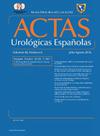美国人群中肾结石的风险因素和预测模型:倾向评分配对队列研究
IF 1.2
4区 医学
Q3 UROLOGY & NEPHROLOGY
引用次数: 0
摘要
目的:本研究旨在利用美国国家健康与营养检查调查(NHANES)的数据,确定美国人群肾结石疾病的危险因素并建立预测模型。方法在一项倾向评分匹配队列研究中,我们检测了血清α-Klotho、血红蛋白水平、血清肌酐和尿白蛋白/肌酐比值(uACR)与肾结石疾病的关系。最初,筛选了216,560名参与者;根据倾向匹配,28,370名年龄在40至79岁之间的成年人被纳入最终分析。血清α-Klotho水平与肾结石疾病呈负相关,特别是在慢性肾脏病患者和饮酒者中。血红蛋白水平与肾结石疾病风险呈负相关,而血清肌酐水平呈u型关系。总体而言,未观察到明显的uACR趋势。低血红蛋白和α-Klotho水平以及血清肌酐和uACR升高与全因死亡率增加显著相关。结论血清α-Klotho、血红蛋白、血清肌酐和uACR水平在评估肾结石疾病风险和全因死亡率中的重要意义,提示这些指标可作为预防和管理策略的潜在靶点。需要进一步的研究来阐明这些关联背后的机制。本文章由计算机程序翻译,如有差异,请以英文原文为准。

Factores de riesgo y modelos predictivos de litiasis renal en la población estadounidense: estudio de cohortes emparejadas mediante puntuación de propensión
Objective
This study sought to identify risk factors and develop predictive models for kidney stone disease in the U.S. population using data from the National Health and Nutrition Examination Survey (NHANES).
Methods
In a propensity score–matched cohort study, we examined the association of serum α-Klotho, hemoglobin levels, serum creatinine, and the urinary albumin-to-creatinine ratio (uACR) with kidney stone disease.
Results
Initially, 216,560 participants were screened; following propensity matching, 28,370 adults aged 40 to 79 years were included in the final analysis. Serum α-Klotho levels were inversely associated with kidney stone disease, particularly among individuals with chronic kidney disease and those who consumed alcohol. Hemoglobin levels demonstrated an inverse association with kidney stone disease risk, whereas serum creatinine levels exhibited a U-shaped relationship. No significant trend was observed for uACR overall. Low hemoglobin and α-Klotho levels, as well as elevated serum creatinine and uACR, were significantly associated with increased all-cause mortality.
Conclusion
Our findings underscore the significance of serum α-Klotho, hemoglobin, serum creatinine, and uACR levels in assessing the risk of kidney stone disease and all-cause mortality, suggesting these markers as potential targets for prevention and management strategies. Further research is warranted to clarify the mechanisms underlying these associations.
求助全文
通过发布文献求助,成功后即可免费获取论文全文。
去求助
来源期刊

Actas urologicas espanolas
UROLOGY & NEPHROLOGY-
CiteScore
1.90
自引率
0.00%
发文量
98
审稿时长
46 days
期刊介绍:
Actas Urológicas Españolas is an international journal dedicated to urological diseases and renal transplant. It has been the official publication of the Spanish Urology Association since 1974 and of the American Urology Confederation since 2008. Its articles cover all aspects related to urology.
Actas Urológicas Españolas, governed by the peer review system (double blinded), is published online in Spanish and English. Consequently, manuscripts may be sent in Spanish or English and bidirectional free cost translation will be provided.
 求助内容:
求助内容: 应助结果提醒方式:
应助结果提醒方式:


